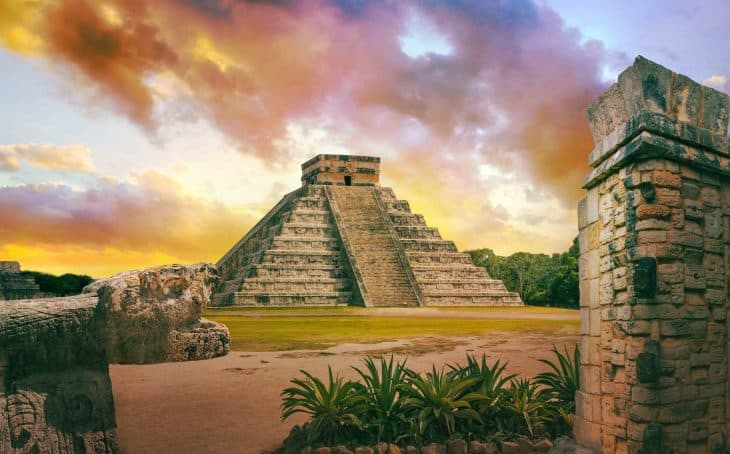
When people hear about the Mayans, it’s likely that the ruins come to mind that belongs to the ancient city of Chichen Itza. At its height, the city served as a home to its people, a massive marketplace, and a center of religion. Even today, with the city lying in ruins, it still stands as a testament to the glory of the ancient Mayan civilization. Learn more with these 40 Chichen Itza facts.
- The city center of Chichen Itza covers an area of at least 5 km².
- Archaeologists believed that up to 50,000 people once lived in the city.
- Archaeologists have also discovered over 20 building complexes in the city
- 75 different roadways connect the building complexes to each other.
- Over 2 million tourists visit Chichen Itza’s ruins today.
- The Mayans first settled Chichen Itza’s site between 750 AD and 900 AD.
- Chichen Itza became a regional capital in its area in the 10th century.
- The city began to decline during the 12th century.
- The Mayan kingdom of Mayapan conquered Chichen Itza in the 13th century.
- Montejo the Younger led Spanish conquistadores to Chichen Itza in 1543.
- In 1544, the Mayans managed to force a Spanish retreat from the city.
- The Spaniards later retook the city and turned it into a cattle ranch by 1588.
- Proper archaeological work in the city began in the late 19th century.
- Tourists also began visiting the city during that time.
- UNESCO later declared Chichen Itza as a World Heritage Site in 1988.
- Chichen Itza has the reputation as the second-most visited archaeological site in Mexico.
- The Temple of Kukulkan, one of the New Seven Wonders of the World, stands in Chichen Itza.
- The state government of Yucatan owns the site where Chichen Itza stands.
- The ruins themselves, however, count as property of the Mexican federal government.
- An asteroid shares its name with the city, 100456 Chichen Itza.
Was this page helpful?
Our commitment to delivering trustworthy and engaging content is at the heart of what we do. Each fact on our site is contributed by real users like you, bringing a wealth of diverse insights and information. To ensure the highest standards of accuracy and reliability, our dedicated editors meticulously review each submission. This process guarantees that the facts we share are not only fascinating but also credible. Trust in our commitment to quality and authenticity as you explore and learn with us.
